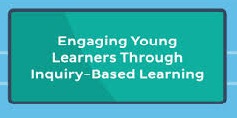Effect of Inquiry-Based Teaching Method on Students Achievement and Retention of Concepts in Integrated Science in Senior High School

Abstract:
This study purposely investigated the impact of using inquiry-based teaching
method on students’ academic achievement and retention of concept in integrated
science against the traditional method in some selected senior high schools in the
Obuasi Municipality. The study also investigated the difference in the mean achievement
score between male and female students taught integrated science using inquiry -based
method.
The sample for the study was 292 students in SHS two from Christ the King
Catholic Senior High School and Obuasi Secondary Technical in the Obuasi Municipality.
The sample were obtained through random sample technique.
The experimental group received instructions in integrated science using
inquiry-based method of teaching whereas the control group were taught with the
traditional method.
The data were collected through the use of pretest- posttest research design
and were analyze according to the research question for the study. The main research
question for the study was: What is the effect of inquiry-based method of teaching
on students’ achievement and retention of concepts in integrated science?
The results
from the study indicates that the students in the experimental group performed better
than the students in the control group.
The findings
also show that students who were instructed with inquiry-based
method have higher retention capacity than their counterpart students who were exposed
to traditional method.
There was a slightly gender disparity in the achievement and retention capacity
of both male and female students taught integrated science with inquiry-based method
in favour of the male. This means that inquiry-based method is very rewarding to
students in terms of achievement and retention regardless of gender.
References:
[1] Akpan, O. E. (1992).
Towards creative science teaching and learning in West African schools. Cape Coast:
Catholic Mission Press.
[2] Asselin, M., Branch,
J. & Oberg, D. (Eds). 2003. Achieving information literacy standards for school
library programs in Canada. O.N: Canadian School Library Association. (atas talian)
http://ednet.edc.gov.ab.calk-12/curriculum/by
[3] Azure, J.A. (2015).
Senior High School Students’ views on the teaching and learning of integrated science
in Ghana. Journal of Science Education and Research, 1(2), 49-61
[4] Bybee, R. W., Taylor,
J.A., Gardner A., Scotter, P. V., Powell, J.C., Westbrook, A. & Landes, N. (2006).
The BScs 5e instructional model: origins and effectiveness. Office of Science Education
National Institutes of Health. 1-80.
[5] Cooper, J. M. (1990)
(Ed.). Classroom teaching skills. Toronto: D. C. Heath and Company.
[6] CRDD (2010) Integrated
science Syllabus for Senior High School. Curriculum Research and Development
Division.
[7] Demeo, S. (2005). Gazing
A Hand: A Foulcaltion View of the Teaching of Manipulative Skills to
[8] Introductory Chemistry
students in the United States and the Potential for Transforming Laboratory Instruction.
Retrieved April 5, 2012, from
http://onlinelibrary.wiley.com/doi/10.1111/j.1467-873X.2005.00330.x/pdf
[9] Hiang, P. S. (2005).
Pedagogy of Science. Kuala Lumpur: Percetakan Sentosa (K. L) Sdn.Bhd
[10] K.Adu-Gyamfi (2014)
Using activity method to enhance students’ performance in energy transformation.
[11] K.J. Sree (2010) Methods
of Teaching Science Discovery Publishing House.
[12] Khalid, A., & Azeem,
M. (2012). Constructivist vs. traditional: Effective instructional approach in teacher
education. International Journal of Humanities and Social Science, 2(5), 170–177.
[13] Davar, M. (2012) Teaching
of Science PHI Learning Limited
[14] McFarland, E. (2005).
Using Demonstration in Teaching Physics. La Physique Au Canada, 87-89
[15] Mensah, S. K. E. (1992).
Source book for science tutors’ professional studies.
[16] Shamsudin, M. N and
Abdullah, N. “Strategies of Teaching Science Using an Inquiry based Science
[17] Education (IBSE) by
Novice Chemistry Teachers”, Procedia - Social and Behavioral Sciences, vol. 90,
no.10, (2013), pp.583-592.
[18] O’Oconnor, J. P. (2002).
Teachers are the problem in SMT, not girls. Retrieved on January 9, 2009 from http://www.adea.org
[19]
Okoroafo, S. (2014). Gender difference in secondary
school students’ academic achievement in Science. Australian Science Teachers
Journal, 23(6), 23-25.
[20]
Oluwatosin V. A. (2015). effect of hands-on activities
on senior secondary chemistry students’ achievement in chemistry. Benue State. achievement in Basic Science. Unpublished M.Ed Dissertation, Tai Solarin University of Education, Ogun
State, Nigeria.
[21]
Olorundare, A. S. (2014). Correlates of poor academic
performance of secondary school students in the sciences in Nigeria. Paper presented
at the International Institute for Capacity Building in Higher Education, Virginia
State University, Virginia, USA. 20th – 31st June, 2014.
[22] PR˚UCHA, Jan, Eliˇska
WALTEROVA and Jiˇ ´ r´ı MARES. ˇ Pedagogick´y slovn´ık. Praha: Port´al, 2009. 395p.
ISBN 978-80-7367-649.
[23] Shadreck, M. & Mambanda,
I. (2012). Science teacher quality and effectiveness: Gweru Urban junior secondary
school students’ point of view. Asian social science, 8(8), 121-135.
[24] Tytler, R. (2003). A Window
for a Purpose: Developing a framework for describing effective science teaching
and learning. Research in Science Education, 33. pp. 273-‐298. Kluwer Academic Publishers
[25] Perry, J. N. (2009).
What is Simulation? Retrieved February 18, 2011, from Saskatoon:
http://olc.spsd.sk.cs/DE/PD/INSTR/strats/simui/index.html
[26] Udo, M. E. (2011). Computer-Based
Science Simulations, Guided-Discovery and students’ Performance in Chemistry.
[27] Wood, W.B & Gentile,
J.M. (2003). Teaching in a Research Context. Science, 302:1510.
[28] Yager, R.E. (1991).
What research says to the science teacher, volume seven. The science and technology,
society movement. Washington D.C. National Science Teachers Association
[29]
Yara,
O, P., 2009. Students’ attitude towards mathematics and academic achievement in
some selected secondary schools in South Western Nigeria. European Journal of Scientific
Research, 36 (3): 336-341.

